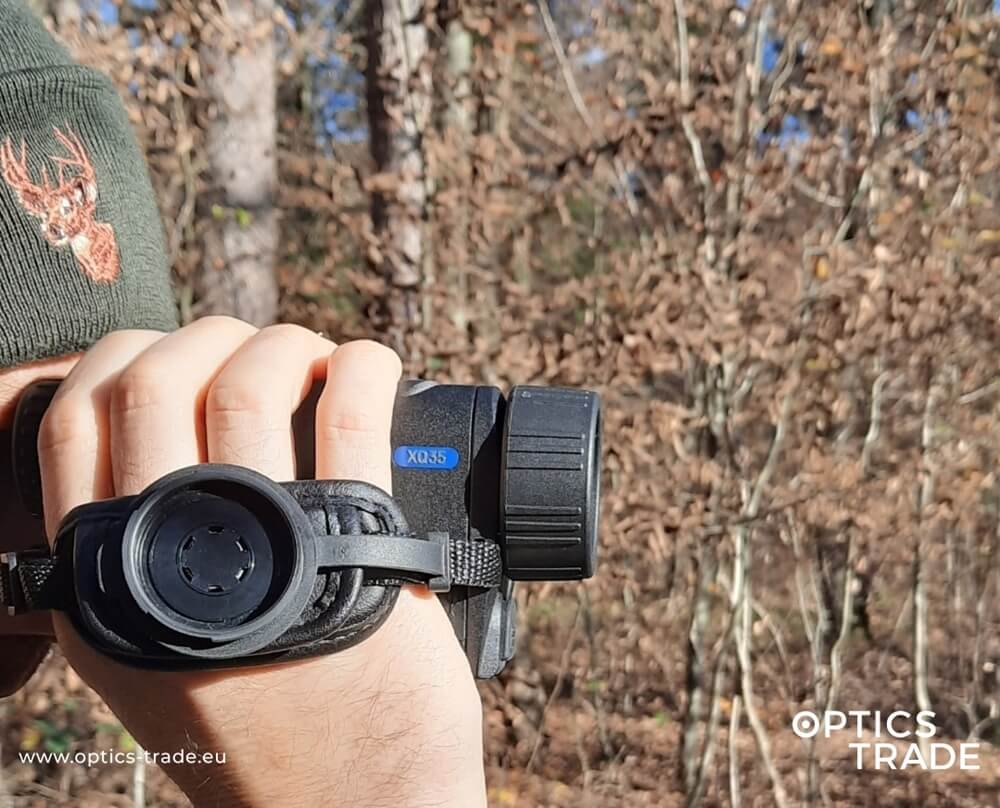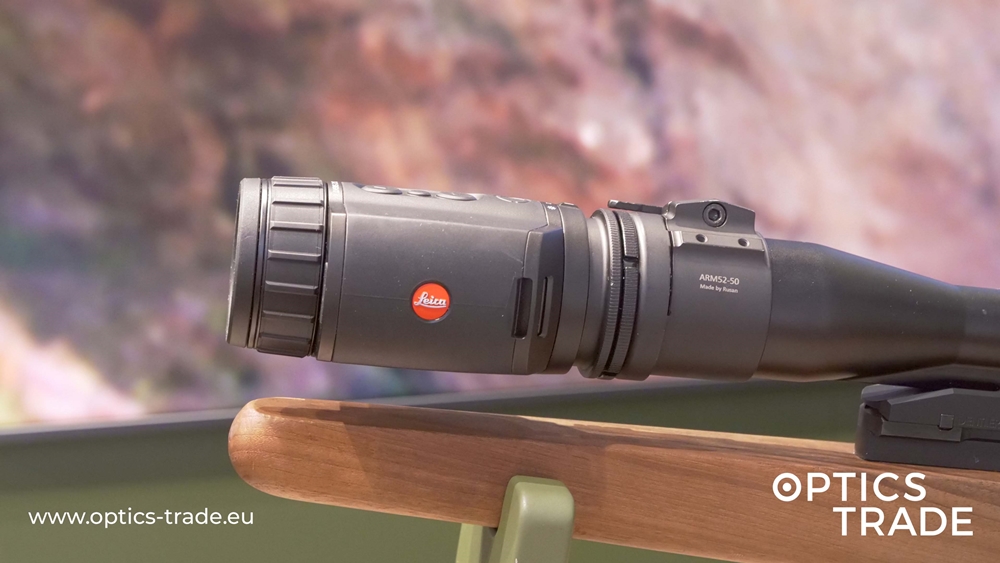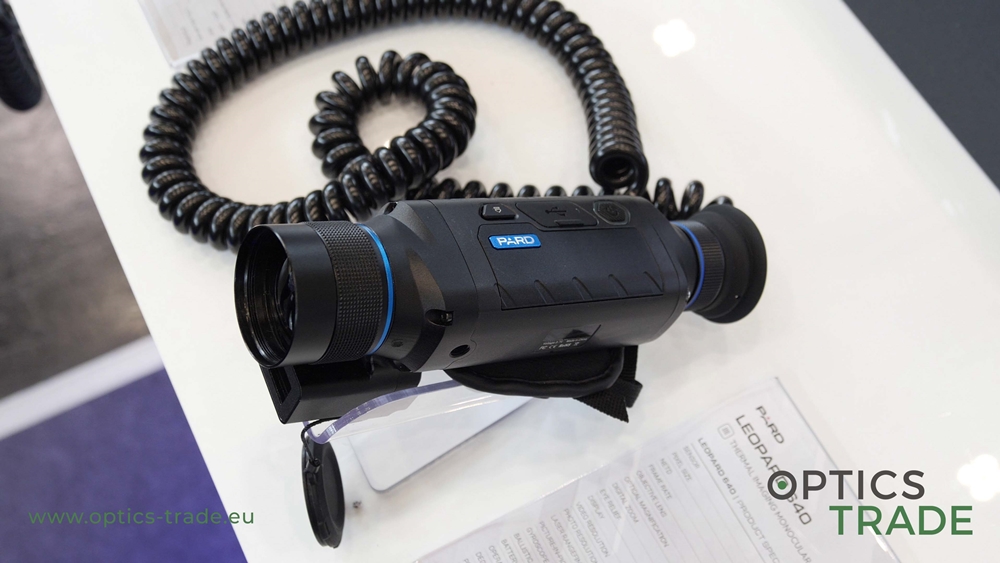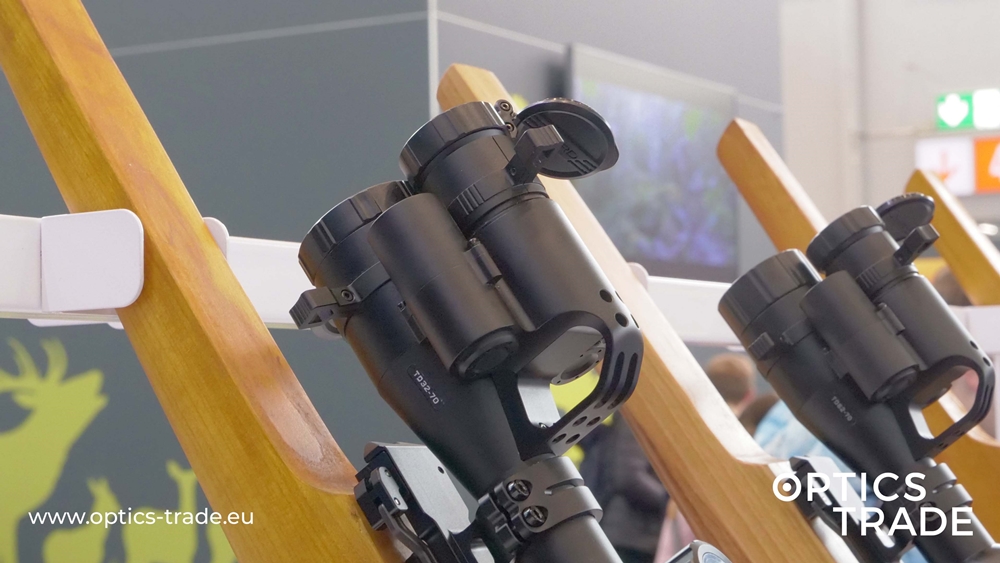In October, we evaluated two different thermal monoculars from Pulsar, the Axion 2 XQ35 LRF and the Axion 2 XG35 LRF. The mornings were mostly foggy, so we had an opportunity to compare the devices in poor visibility as well.
Our objective was to assess how much of a difference there is between the Pulsar Axion 2 XG35 LRF, which is more costly and technologically superior, and the Pulsar Axion 2 XQ35 LRF, in order to assist potential buyers in determining if the extra expense for the XG35 LRF is worthwhile.
- Technical specifications of the Axion 2 XQ35 and XG35 LRF
- Differences between both Pulsar thermal monoculars
- Pulsar Axion 2 technical specifications
- How the testing was done
- Convenience of use and build quality
- Quality of the image in different weather conditions
- Operation of the laser rangefinder
- Usability of LRF thermal monocular in different hunting styles
- Battery life of Pulsar devices
- Price/performance ratio
- Does the difference in quality outweigh the difference in price?

Technical specifications of the Axion 2 XQ35 and XG35 LRF
Both models belong to the Pulsar’s series of hand-held thermal monoculars Axion 2.
The housing of both models is completely identical in dimensions, extremely compact and made of magnesium alloys. The module with the laser rangefinder does add a little to the width and weight of the devices, but they still easily fit into the pocket of a hunting jacket or vest.
The objective lens of both devices, which has a focal length of 35 mm, a f1.0 aperture and is made of germanium, ensures top-notch capture of thermal differences in the environment.
The value of NETD, which tells us how small a difference in temperature the sensor can detect, is <40 mK for both devices.
The devices are powered by the same ASP5 battery type and have the same software.


Differences between both Pulsar thermal monoculars
Thermal sensor
The main difference between the devices is in the thermal imaging sensor. The Axion 2 XG35 model has a resolution of 640×480 pixels, which in comparison to the 384×288 pixels resolution sensor of the Axion 2 XQ35 model provides almost 3 times more pixels and therefore a significantly wider field of view.
The distance between the pixels is also different, with 17 microns (µm) for the XQ model and 12 µm for the XG model.
Screen
The sensor of the device processes the information captured from the environment on the screen. The size and quality of the screen are very important. In this aspect, the XG35 LRF model has a significant advantage over the cheaper XQ35 LRF model.
The XG35 model displays the image on an AMOLED HD 1024×768 screen, which in comparison to the AMOLED 640×400 screen of the XQ35 model feels like being in a movie theater.
The details captured in the image of the thermal imaging devices are affected by the lens focal length, the distance between the pixels on the sensor, and the NETD value. As we have already established, the focal length and NETD values of the devices are the same. The smaller distance between the pixels in the XG35 model theoretically allows for a sharper image with more details.
Image capturing and video recording
Both Pulsar devices can take pictures (built-in photo) and record videos with sound.
In the XQ35 thermal monocular, the resolution of the recording is 528×400 pixels, while in the XG35 model, the resolution of the recording is 1024×768 pixels. This difference is more or less noticeable only when reviewing recordings on a larger, computer screen. When playing recordings on a mobile phone, the difference in resolution of the video itself is not noticeable.
Regardless of the differences in the resolution of video recordings, both devices have a common feature that we are not particularly fond of. The quality of the video is considerably worse than the image quality that we see through the screen of the device. The cause is hard to explain and we can only hope that Pulsar will solve this problem in one of the upcoming software updates of both devices.
For the users of these two devices, this means that by displaying video recordings on a phone or through the YouTube app, they will not show the potential buyers the true quality of the image. For potential buyers, this means that the “live” image will be noticeably better once they get to try the device, regardless of what they think about the quality of the displayed video recordings. Which is fine, isn’t it?
Pulsar Axion 2 technical specifications
| Technical Specifications | Axion 2 XQ35 LRF | Axion 2 XG35 LRF |
|---|---|---|
| Sensor | 384×288 pixels 17 µm NETD <40 mK | 640×480 pixels 12 µm NETD <40 mK |
| Lens | F35/1.0 | F35/1.0 |
| Magnification | 2–8 (x4 zoom) | 2.5–20 (x8 zoom) |
| Field of view | 18.6 m/100 m | 21.7 m/100 m |
| Detection range | 1300 m | 1750 m |
| Screen | AMOLED 640×400 pixels | AMOLED HD 1024×768 pixels |
| Charging data | APS 5 Li-ion Battery Pack Operation time: 11 hours USB-C port | APS 5 Li-ion Battery Pack Operation time: 7 hours USB-C port |
| Dimensions | 152x74x75 mm 350 g | 152x74x75 mm 350 g |
| Video/photo | Resolution: 528×400 pixels Format: mp4 / .jpg 16 GB internal memory | Resolution: 1024×768 pixels Format: mp4 / .jpg 16 GB internal memory |
How the testing was done
Thermal imaging monoculars are an excellent tool for observing in conditions of reduced visibility or complete darkness. They are also useful for stalking in the woods, where with their help, we can spot wildlife significantly earlier than with the naked eye and then decide on how to stalk it. However, since their primary purpose is still observing at night, we focused on this aspect of use in our test.
We wanted to compare Axion 2 devices in terms of:
- Convenience and quality of manufacture,
- quality of image in different weather conditions,
- performance of laser rangefinder,
- practicality for different hunting styles,
- battery life,
- value for money.
We carried out the comparison test in a hunting area located in lowlands where the majority of wildlife is made up of roe deer, hare and fox. Jackals are also present in this area, whereas wild boar visits are occasional. As a result, we made the most comparative observations on roe deer and hares, foxes, and occasionally on other animals that are active at night.
Given the autumn time, we had no problems conducting the test in various weather conditions. We tested in dry, relatively humid, and heavily foggy environments.
Although the image quality of thermal devices is reduced in fog, they still perform significantly better in foggy conditions compared to digital night vision devices, so we found it important to test them in such environment. The degree to which the quality is reduced depends on technical capabilities and build quality of the thermal device.
Throughout the testing, we had both devices with us, and all the recorded material was captured by simultaneous recording or in some cases by recording the same object within a time frame of less than a minute. This way, we wanted to ensure truly equal conditions, as we mentioned that weather conditions, especially humidity in the atmosphere, strongly affect the quality of the captured image of thermal devices. As hunters, we know that fog can change the observation completely – Comparing different thermal devices under varying weather conditions is not reliable in determining the quality of the device.
Convenience of use and build quality
Despite the price difference, Pulsar uses the same materials for both models and we can claim that the quality of manufacture is also the same. When held, the devices convey a sense of high-quality, sturdiness, and reliability.
Because we previously used a product from a competing manufacturer made of plastic materials, the feeling of quality manufacturing was even better. We needed some adjustment period to get accustomed to the level of pressure required to activate the buttons.
Pulsar device’s protection against external factors conforms to the IPX-7 standard.
The accessories that come in the package are the same for both models, and since their external dimensions are also the same, it was simple for us to declare a tie in this aspect of the test.






Quality of the image in different weather conditions
The outcomes of this testing section are believed to be crucial for the final user and will play a significant role in making a decision before making a purchase.
During the test, both Axion 2 devices produced high-quality images and they are deemed suitable for the average hunter. However, there were differences in performance between the two models owing to their technical characteristics.
Quality of the image in good weather conditions
Regardless of the better results in fog, we concluded that the winner in this category is the XG35 model, which in most cases outperforms the XQ35 model. For hunters who frequently encounter foggy conditions during hunting, it would be beneficial to keep the information provided in mind when making a purchasing decision, and the Axion 2 XQ35 should be taken into consideration as a viable option for those conditions.
As expected, Pulsar – XG35 model performed better in good weather conditions. The captured image was clearer, and especially sharper on the edges of the observed objects. This made it easier to easily recognize objects, even at longer distances. The image of the background and surroundings was also more detailed and sharper.
Quality of the image at night
At night, the detailed image of the background and surroundings makes it easier to navigate and determine the direction of the target. The user can easily confirm whether the background allows for safe bullet stop and if there are any obstacles between the target and the shooter. It is easier to determine the distance to the target based on familiar landmarks in the environment. However, since both tested models are equipped with an integrated laser rangefinder, this challenge of night hunting could be completely disregarded this time.
Considering the size of the sensor and the display, the field of view is – as expected – better on the XG35 model. The viewing of the surroundings is thus easier and more comfortable. On top of that, less movement of the device is required while observing.
The Axion 2 – XG35 model’s screen provides an image that is somehow softer, more pleasant, and more friendly for the user’s eyes. It is hard to say that adapting one’s vision to the dark environment after prolonged use of both devices produced was any different, but the small screen of the XQ35 resulted in more eye strain and difficulty seeing details compared to the large screen of the XG35. The experience of looking through the XG35 feels like watching a movie on a big screen in a cinema.
We also noticed that the entire screen of the XQ35 is somewhat yellowish, which was not observed in the XG35. In the latter, the color of the image is always natural, in accordance with the selected color pattern of the heat source.

Regardless of the differences and better quality of the screen on the XG35 model, it should be noted that:
On both Axion 2 models, the screen is covered with some sort of a ‘curtain made of small white dots’. This is especially annoying when using the “white hot” mode, where most of the screen is usually darker in color, resulting in this effect being more pronounced.
Basically, in the entire comparison test, this is the only true downside of both devices. However, we believe that Pulsar will have to fix this drawback, as a screen with such a disruptive “addition” does not at all suit a device of this price range, let alone the reputation of a manufacturer like Pulsar.
Quality of the image in fog
In good weather conditions, the XG35 model certainly outperforms the XQ35 model. However, surprisingly, the XQ35 model excelled in fog, significantly outperforming its more expensive competitor. Especially at slightly larger distances, in foggy conditions, the XQ35 model allowed for both the detection and identification of targets at noticeably greater distances. Especially the identification of the target was significantly better.
If the XG35 model somehow detected a thermal object in fog, it was usually shown only in the form of a smudge or cloud – the object could not be identified. On the other hand, the XQ35 model “cut through” the fog surprisingly clearly. At a similar distance, objects seen through the XQ35 model were displayed with more clarity as with the XG35 model.
Given that NETD is the same for both models, we assume that this is due to the improved and more sophisticated algorithms being used in the XQ35. Maybe, the difference lies in the distance between pixels (17 µm on Axion XQ35, 12 µm on Axion XG35). It may not be a coincidence that Pulsar Helion 2 XP50 Pro, currently the best Pulsar thermal monocular for observing in a foggy environment, also uses the 17-µm technology, although with a sensor that has NETD <25 mK.
Three-step signal amplification function
In this context, we would like to point out the usefulness of the three-step signal amplification function in foggy conditions. This was the only period when we had the function set to the highest value. The result is best observed if you first observe the surroundings at the lowest setting, then gradually increase the signal amplification level. A setting that works great in fog may slightly worsen the image under good weather conditions, so we recommend checking which setting works best for you in different conditions when you start using the device.
Operation of the laser rangefinder
The laser rangefinder in both Pulsar LRF thermal devices is the same and thus any comparison between both Axions in this field is irrelevant.
In our opinion, the laser rangefinder on both Axion 2 devices worked quite unreliably in fog and humid air. In the fog, both devices displayed the measured distance around 10 m or were unable to measure the distance. Measuring the distance is one of the safety factors during hunting, especially in foggy conditions when thermal imaging devices display an image with very little details of the surroundings and background of the target. Unreliable operation of the laser rangefinder in such conditions is quite disappointing.


Usability of LRF thermal monocular in different hunting styles
We tested both Pulsar devices:
- At a wild boar feeding ground,
- while hunting from a raised hide overlooking an open field,
- while stalking in the forest during daylight.
Feeding ground
At the feeding ground, the differences between the devices were minimal. The direction of the feeding ground and the most common direction of the wild boar’s arrival was known in advance, so the field of view was not so important. In addition, there was a shorter distance between the user and the target, which resulted in minimal differences in the performance of both devices.
Hunting from a raised hide
The differences between the two devices were more evident when we were hunting from a raised hide – the XG35 model had an edge in terms of performance. The larger screen and better image clarity in most weather conditions, except for fog, provided for a more pleasant experience. The larger field of view also plays an important role when the game gets to the proximity of the raised hide.
Stalking during daylight
The biggest difference between the devices was shown during stalking. A distinct feature of this hunting technique is constant movement. This causes the need for more frequent observation of the surroundings, which is easier and faster with the wider field of view of the XG35 model.
It is important to note that when using thermal imaging devices during daylight hours, the image quality will differ significantly from that at night. The sunlight heats objects in the environment, which makes it difficult for the device to display a sharp contrast between the cold environment and the significantly warmer body of living organisms.
At the same time, we get the feeling that the forest is suddenly full of thermal reflections, which, in most cases, turn out to be heated rocks, bushes, or something similar. Here, the quality of both the hardware and software of thermal imaging devices comes into play. Despite the thermal radiation that various objects in the forest emit, the user quickly learns to distinguish the thermal signal of a living creature from other observed objects with some practice and experience given that the quality of the thermal imaging device allows it. We can say that both devices we compared are more than satisfactory in quality, even for stalking in daylight.
Comparing both Pulsar devices in different hunting styles, we can confidently say that the XG35 model is the winner due to its versatility.
Battery life of Pulsar devices
Since both Axion 2 devices use the same type of battery (APS5), we decided to compare their battery life as well. The results indicated that the cheaper device (XQ35) had a much longer battery life than the more expensive device (XG35). Apparently, the larger thermal sensor uses more energy.

In the past, we already checked the battery life of these two devices by leaving them turned on in the same conditions (room temperature). XQ35’s battery lasted 11 hours, while the more expensive XG35’s battery only lasted 6.5 hours.
Battery life test conditions
During the current test, we simulated the real-world usage – the average ambient temperature was around 5°C. During our observations, we frequently used the recording feature and occasionally used a smartphone connection. We turned on both devices when we got to the hunting ground and ran them continuously without utilizing stand-by.
Results
It was found that the XQ35 model could be used for at least two hunting trips, which typically lasted four hours, without requiring intermediate recharge. After the initial trip, the XG35 model’s battery was so depleted that we did not dare return to the hunting ground without either recharging it or carrying a backup battery.
We also used both devices during shorter trips to the hunting ground (30 minutes) and evening walks with a dog. The XQ35 model is unquestionably the winner in this regard. We are confident in saying that a spare battery for this model is not required with typical hunting use. The user will quickly adjust to how much battery life is required for a typical hunting session. On the other hand, if you choose the XG35 model, we strongly advise acquiring an extra battery to guarantee continuous power supply even if you go on a longer hunt or encounter extremely low temperatures.
Price/performance ratio
All of the tests and comparisons we have presented must now be crystallized into this question crucial to the buyer – is the XG35 model worth the extra money?
It is true that both devices are of very high quality. With both there is room for improvement, but then Pulsar would already leap into the higher price range where they have Helion and Merger series.
The XG35 model has certain advantages that elevate it above the XQ35. This is understandable since it is also more expensive.

Does the difference in quality outweigh the difference in price?
If a customer can or is willing to pay for this difference, then the answer is yes. We can support this claim by telling you this: when we went out hunting and not to test both devices, we always took XG35 with us.
Even the XQ35 model, however, offers a high level of detection of living organisms during nighttime, especially when its performance is compared to that of the digital night vision devices or standard binoculars.
For individuals who are new to thermal technology, any of these two Pulsar thermal monoculars will provide a new perspective on nocturnal activities in hunting areas. It may reveal that animal populations are not as low as previously believed but that their behaviors have shifted.
Additionally, thermal technology allows for the detection of all the living creatures that share the same hunting space, which can be particularly beneficial for game wardens. Furthermore, the improved detection capabilities of thermal technology will make hunting safer by allowing for more calculated shots.









